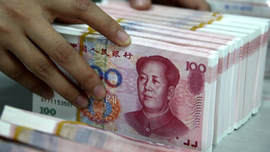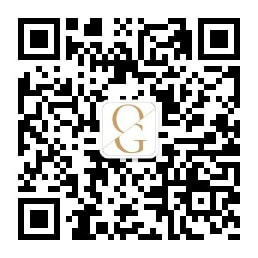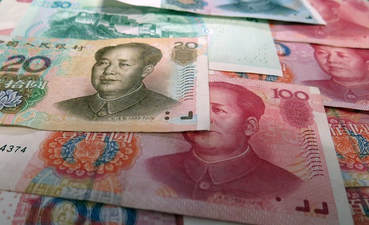 The Chinese Renminbi has been on the news a lot lately, both positively and negatively. The surprise devaluation in August shocked markets worldwide, while the inclusion of the RMB in the basket of international reserve currencies (Special Drawing Rights) of the International Monetary Fund was received on a more positive note. In this first part we will discuss the history of the people’s currency. History of the RMBThe Communist Party of China introduced the RMB in June 1949 as a unified currency for its controlled territories. In the early days of the RMB the currency was pegged, or fixed, against the Dollar at ¥2.46 per USD. When the Chinese economy started to make the transition from a planned economy to a market economy, the RMB was devalued to increase the competitiveness of Chinese exports. When the RMB is devalued against the dollar, the owners of dollars can buy more Chinese goods for the same amount of dollars. Because China was exporting much more than it was importing, it had a large balance of trade surplus. This resulted in a large amount of foreign assets in China’s current account, most notably dollars. China used these foreign assets to maintain a peg against the dollar of ¥8.27 from 1997 to 2005. It achieved this by using its foreign assets to buy or sell RMB in order to keep the rate fixed at ¥8.27. After significant pressure from foreign countries that had a huge trade deficit with China, most notably the US, China decided to unpeg the RMB from the dollar on July 21, 2005. The RMB immediately started appreciating, until the global financial crisis hit in 2008. Because of the turmoil, China decided to re-peg the RMB against the Dollar, this time at ¥6.82 per dollar. When China continued the internationalization of its economy, it released a statement on June 19, 2010 that it would ‘proceed further with reform of the RMB exchange rate regime and increase the RMB exchange rate flexibility’. China would let the market have greater influence on the value of the RMB, but would not allow large swings in the currency. Since then, the RMB has steadily appreciated to ¥6.04 per dollar in early 2014, after which a gradual depreciation began. On August 10 of this year, the RMB had devalued to ¥6.2 against the dollar until the PBOC allowed it to devalue to almost ¥6.4 in a surprise move that send shockwaves through international financial markets. Many believe this move was necessary to fulfill the requirements of the International Monetary Fund (IMF) to be included in its basket of reserve currencies, also called Special Drawing Rights (SDRs). These SDRs are a kind of foreign exchange reserve asset that can be traded in for real currency if necessary. During their November review, they decided to include the RMB in their basket together with the U.S. Dollar, the Euro, Japanese Yen, and British Pound. Effective October 1, 2016, the Yuan will make up 10.92% of the basket, compared to 41.73% for the US Dollar. Although inclusion of the RMB in the SDR does not increase the usage by a significant amount, it makes it easier for countries to hold RMB assets in their official foreign currency reserve. By opening the financial system, it becomes easier for other countries to invest in, for example, Chinese government bonds. This in turn leads to better capital flow in and out of China, which is necessary for liquidity and the allocation of capital. The Chinese RMB has transformed from a purely domestic currency to an international reserve currency over the last couple of years. To increase its role in international trade, it has to be more freely traded in the market. The current devaluation is part of that transition, and the next article will explain why this is also helping to avoid the ‘hard-landing’ of Chinese economic growth.
Current SituationChina has grown into the world manufacturing powerhouse since the 1990s. When you look around at all the products you have, there is a big chance most of them are either made in China or contain parts that are made in China. All these products are exported by Chinese firms, and the products are usually paid for in dollars. The companies need Renminbi (RMB) to pay their workers and procure production inputs, so they need to exchange dollars for RMB. The companies sell the USD and buy RMB, which increases the USD supply and lifts the demand for RMB. To keep the RMB/USD exchange rate stable, the central bank (PBOC) steps in to restore the balance. They buy the USD and sell RMB (which they can do by simply printing the money). This creates a scarcity of US dollars, which keeps the RMB/USD exchange rate at the level the PBOC desires. This leads to an accumulation of dollars in the foreign exchange reserves of China, which it needs to invest globally. It has done so by mainly investing in US treasury bonds, and China is now the largest owner of US treasury bonds in the world. With the current slowdown in Chinese economic growth, the Chinese government and Central bank have taken several measures to dampen the slowdown. Investments are still very high in comparison to more developed countries, while consumer consumption makes up about 1/3 of GDP in comparison with almost 2/3 in the US. China wants to make the transition from an investment driven economy to a consumer driven economy. To facilitate this it has to become less dependent on exports and its manufacturing industry and create more domestic demand for products and services. This transition, however, will take many years to fully take effect. In the meantime, the government is trying to avoid a large drop in GDP growth, or ‘hard-landing’, that many people are expecting. To do so, it has to keep its manufacturing sector competitive and this can be achieved by devaluing the RMB. Since the RMB has been ‘pegged’ against the US dollar for the majority of the time, it has risen together with the US dollar. The dollar has appreciated against other major currencies like the yen, the euro, and the British pound. This has made Chinese products expensive for countries that use these currencies, as they need to pay more of their own currency to buy the same amount of Chinese products. China has realized that their currency has to devalue if it wants to stay competitive in the global market. They started devaluing in August 2015 with a surprise 2% devaluation. Since then, the RMB has depreciated against the USD from a level of 6.2 RMB per USD to 6.55 RMB per USD. Chinese people have noticed this depreciation and have started moving money outside of China, effectively selling RMB and buying USD. This is putting downward pressure on the RMB, so to counterbalance this the PBOC has to buy RMD and sell USD. They do this by decreasing their foreign exchange reserves (for example selling US treasuries), which stood at a little over 4 trillion dollars in August before the depreciation. Since then they have spent almost 800 billion dollars to prop up the RMB, as their foreign exchange reserves have declined to 3.23 trillion. If the outflow of RMB continues at the current pace of about 100 billion USD per month, they can still keep the volatility down for a while. However, if the pace picks up and they reach the end of their reserves, they have no other chance but to float their currency, which will most likely result in a big depreciation of the RMB against the USD and other currencies. This will cause significant volatility in the global financial markets and quite some trouble for Chinese policy makers.
Comments are closed.
|
About the O&G Research TeamThe O&G Research Team publishes insights on the global markets. Our research scope ranges from the US to China. Categories
All
Follow us on WeChat:

Read new articles and updates everyday on your phone!
DisclosuresWe may invest in some of the companies mentioned on this website. We are not responsible for the content on any external links on this website. The opinions expressed in this report do not constitute a buy or sell recommendation.
|

 RSS Feed
RSS Feed